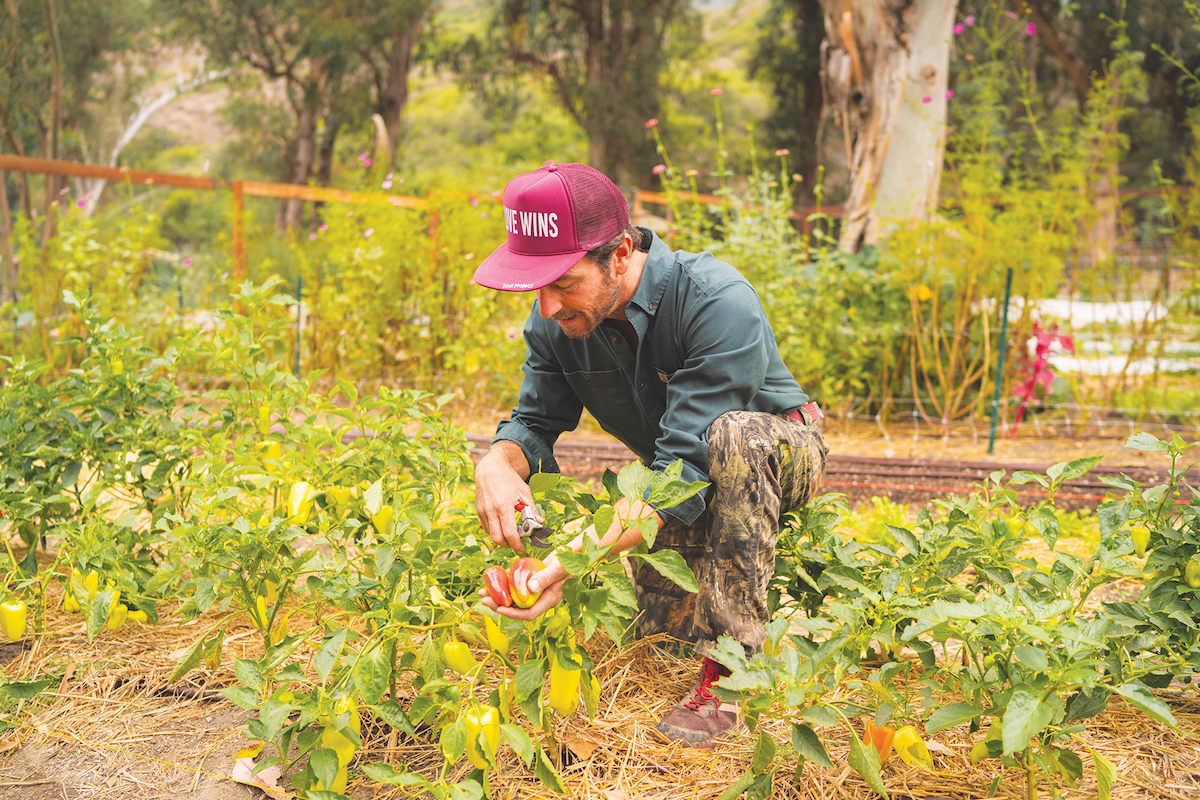
This post was originally published on this site
Local experts provide insight on raising your own farm-to-table produce.
By Tanya A. Yacina
Imagine tender carrots plucked straight from the soil, then rinsed, chopped and added to a soup only moments later in a kitchen that’s just steps from the garden. Or plump, red tomatoes harvested from the vine and sliced right into a salad. There are many benefits to having a garden at home, including improved health and reduced waste as well as decreased cost for produce shopping. Not to mention, fresh-from-the-ground veggies and herbs tend to taste better than their store-bought counterparts and are brimming with essential vitamins, minerals and antioxidants.
A few local restaurants take time to grow their own produce and herbs in on-site culinary gardens. Kyle St. John, executive chef at The Ranch at Laguna Beach, says the goal is to collect ingredients for the property’s in-house dishes directly from the source.
“Usually, produce goes through different vendors and along planes, trains and automobiles. Knowing we can source items directly from our garden is a great feeling,” St. John says. “We are very fortunate to have this option, as most restaurants do not. Nothing ever leaves our property—we compost all of our food scraps in the kitchen at Harvest Garden. After many months and constant turning, we are able to use the rich soil we created to fold back into the garden.”
Staying Grounded
According to Ryan “Farmer Leo” Goldsmith, who tends to The Ranch’s on-property Harvest Garden, this growing space is part of a half-acre farm that borders the Aliso and Woods Canyons Wilderness Park. Seedlings are germinated in a 20-foot greenhouse and then the vegetables, flowers and herbs are transplanted into 50-foot garden beds. No synthetic or chemical additions are used in the ecologically sustainable operation, in line with the hotel’s environmental priorities.
“Growing our own produce from seed allows for careful curation of the ingredients for Harvest restaurant’s culinary team,” Goldsmith explains. “I’m able to raise healthy, strong and fresh goods—knowing they are completely safe, transplanted at optimum spacing and harvested in the cool of each morning for optimum flavor and texture.”
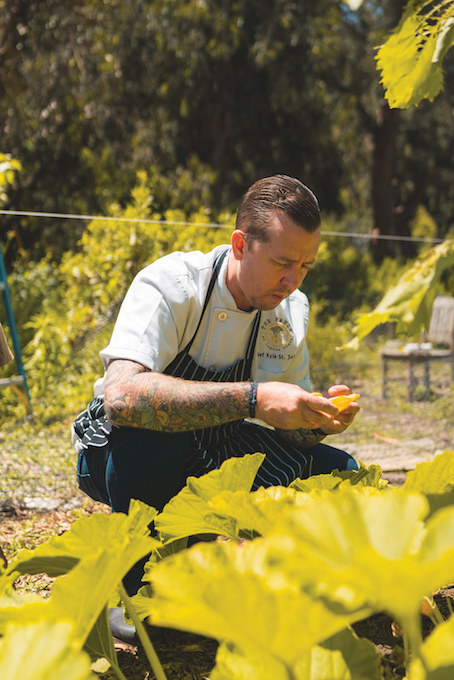
Just up the road, Montage Laguna Beach Executive Sous Chef Benjamin Martinek adds that growing a culinary garden connects you with nature. He also says that being at one with the seasons is crucial because so many plants only thrive during a certain time of year. A garden also connects you with the weather, climate and even microclimates that change day by day.
“At Montage Laguna Beach, we save thousands of dollars a month by growing our own garnishes, microgreens, herbs and vegetables for dishes. Plus, when you grow a product yourself, you’re more connected to it,” Martinek explains. “From a chef’s perspective, when you’re involved in the harvesting, cleaning, et cetera and putting [in] a lot of work to get an ingredient to its peak, you’re going to be much more careful then about the prepping and cooking process.”
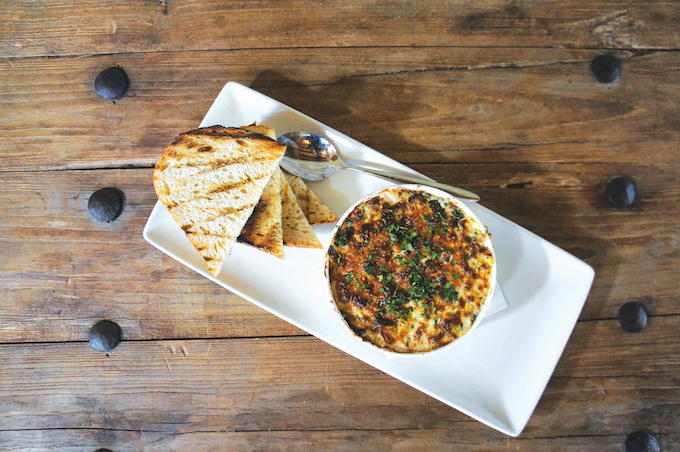
Martinek also says that a fresh vegetable’s flavor is truer to nature when it comes straight from the ground onto the plate. Additionally, when you grow ingredients yourself, you can control what goes into them such as natural and organic fertilizers over chemicals, hormones and stimulants that may be in the same vegetables and herbs you might usually purchase from a store.
Fruits of Your Labor
What starts by sowing a tiny seed will soon flourish with proper care. And children often love witnessing the cycle of life: little green sprouts emerging from the soil, then getting bigger and finally producing fruits or vegetables ripe for picking.
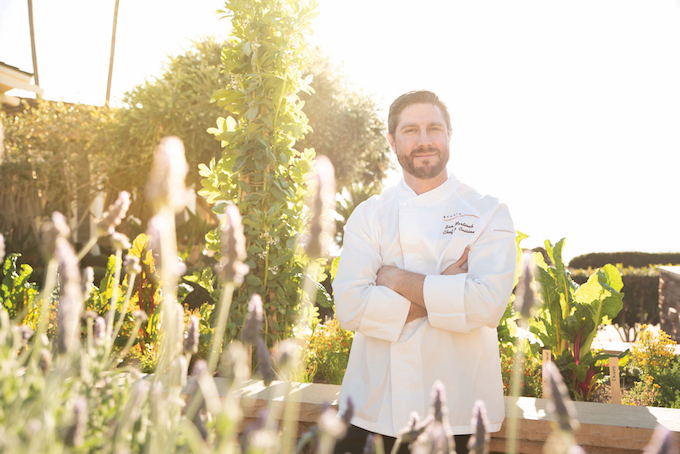
“The best things to grow at home are … [those] that can be easily taken care of, in the sense that they are drought tolerant in the event we skip a watering,” St. John says. “Most people get busy and sometimes forget to take care of [a garden]. I’d suggest growing a few seasonal items and complement with some perennial herbs. Don’t grow items you wouldn’t want to eat and keep it to only a few items—less is more.”
At The Ranch’s Harvest restaurant, some of the on-site bounty has been used to make dishes like braised leek and artichoke gratin with garden kale or a shaved carrot and beet salad with garden lettuces.
Goldsmith notes that the Laguna Beach climate is ideal for spring crops, including sugar snap peas, baby arugula, lettuces and brassica like kale and collard greens. The late spring fog season can be leveraged to enjoy these crops while establishing hot-weather items like tomatoes, peppers and melons.
He recommends situating a garden in the sunniest spot available and to establish fencing as the first step in setting up the plot to keep rabbits and other hungry animals at bay. He also suggests utilizing drip irrigation to water an at-home garden, as it’s easy to maintain and also conserves water.
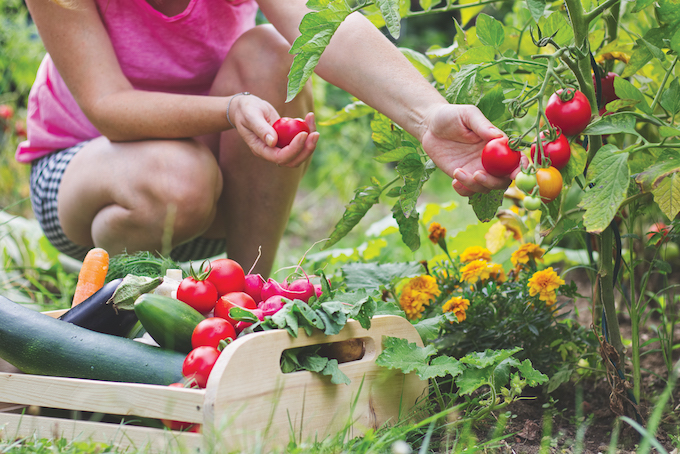
“Although these crops will grow slowly in the fog, once the desert sun arrives in full force, they will crank for a first harvest before August,” Goldsmith explains. “During summer heat, Laguna will have to wait before bringing lettuces and other leafy greens back for a successful fall crop. Most fall crops will continue unaffected through the winter.”
Although the type of plants may need to be rotated every few months, the mild coastal temperatures in the region allow gardens to be maintained year-round.
“Luckily, here in Laguna Beach, we have the climate that many aspiring home gardeners could only dream about,” Martinek says. “Many things still depend on the season, but our environment is the jackpot of sorts when it comes to growing many ingredients. The only thing I will warn against is that if you’re right on the ocean, the salinity in the air can affect some plants, such as citrus fruits. They have a harder time ripening if you’re right on the ocean.”

At Montage, any crudite on the menu features miniature vegetables from the resort’s garden and cilantro grown on-site is also used in multiple dishes at Mosaic Bar & Grille. A plethora of the herbs used in entrees and garnishes are also grown on property, such as African basil, thyme, rosemary, mint and parsley, which grow well year-round in Laguna. “We also update menus depending on the season and what’s best to grow at a particular time,” Martinek says. “In the warmer months, there’s a big focus on vegetables like fava beans, radishes, beets, carrots, green beans and sugar snap peas.”
Martinek is especially proud of a cocktail, El Maestro, available from The Loft’s bar. “We combine Clase Azul tequila reposado, simple syrup infused with lemon verbena from the garden, and orange bitters made with oranges from the garden,” he says. “Other cocktails on the menu also incorporate fresh herbs, such as … mojitos and Moscow mules—both are made with fresh mint.”
Martinek recommends researching what will work best for your particular home’s location, and says you can learn a lot by checking out local nurseries and noting how they keep their plants. Aspiring gardeners can easily discover the best spot to place a garden in their yard with a little bit of research.
The bottom line is that even though Laguna Beach boasts great weather all year, there are still a few things to know and learn. For example, Martinek advises against growing cucumbers too late in summer, as they don’t do well in high heat, and don’t start tomatoes too early in the year because even though it’s Southern California, temperatures can still get quite cold and the plants will chill.
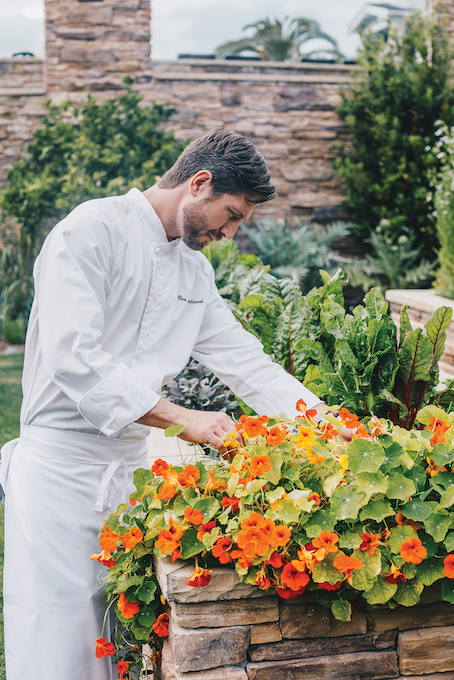
Martinek says you don’t need a green thumb to be a home gardener, but patience is key. Over time, you’ll learn which ingredients work in your location and which ones do not.
St. John recommends keeping it simple at first and don’t neglect your garden, making sure to give it the attention it needs.
“Start with a couple simple vegetables or herbs, get some rich soil, make sure it is getting plenty of light and water it regularly,” St. John advises. “Stay patient and trust the process—once you yield a nice little harvest, you will be inspired to continue growing.”
Herbal Harvest
Turn some of your garden’s bounty into a flavorful dressing, which can top other homegrown produce in a salad.
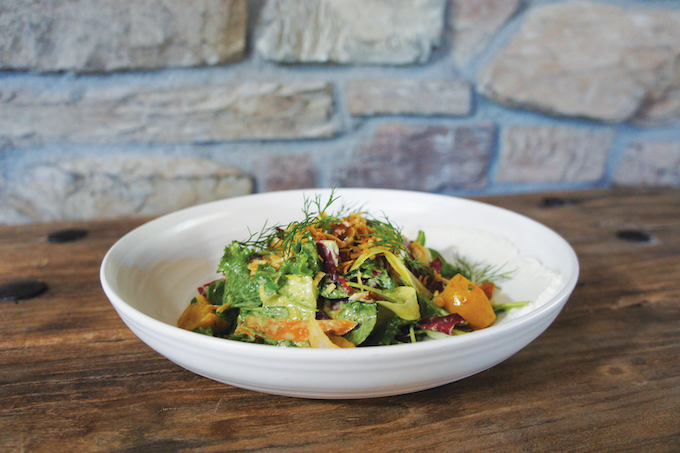
Green Goddess Dressing
1 cup parsley, packed
1 cup chives, packed
1 cup chervil, packed
1 cup tarragon, packed
1 cup dill, packed
2 tablespoons roasted garlic
2 tablespoons shallots. minced
1/2 cup Champagne vinegar
1 cup creme fraiche
1 tablespoon Dijon mustard
3 cups mayonnaise
Salt and pepper to taste
In a blender, combine all ingredients except the mayonnaise and puree until smooth. Transfer to a mixing bowl and whisk in mayonnaise. Season to taste with salt and pepper. Serve atop a fresh salad.
Recipe courtesy of The Ranch at Laguna Beach
